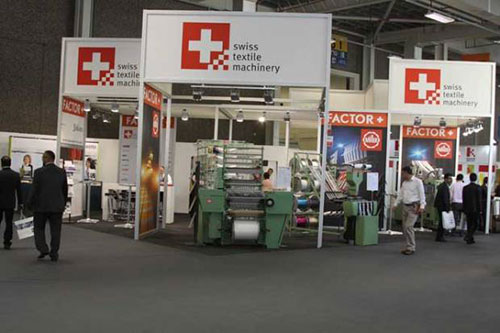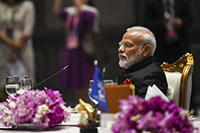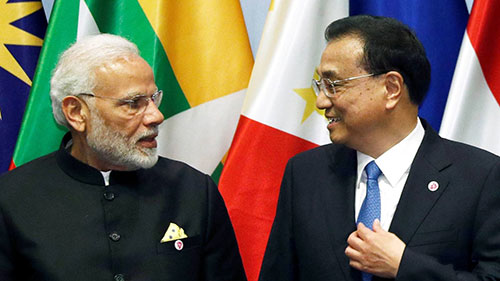FW
Origin Africa was held in Tanzania from October 28 to 30, 2019. Experts from the public and private sector forecasted the future of the East African cotton, textile and garment industry. During Origin Africa 2019, designers demanded more attention and appreciation for their role. While in India, for instance, designers work with factories and factories work with designers, East African designers hardly have any training working with factories and brands. Their creations are not respected or rewarded as intellectual property.
Even Tanzania is inhabited by over 100 tribes with their own colorful clothing traditions but outside the country garments called kanzu (a white or cream-colored tunic for men) and khanga (a more colorful dress for women) are considered to be the traditional attire of Tanzania.
Employment in the East African textile and apparel industry, including Kenya, Rwanda, Tanzania and Uganda, could reach 80,000 jobs in 2025 and 2,00,000 in 2030. Garment exports from the region could reach 1.4 billion dollars in 2025 and double to 2.7 billion in 2030. Within two or three years Madagascar is expected to be Africa’s biggest apparel exporter to the US under the African Growth and Opportunity Act, beating Kenya and all other AGOA-entitled African countries.
Global cotton consumption is expected to fall this year. Decrease in consumer confidence; trade war are two major reasons. China will continue to be the main cotton consumer. Mexico and Pakistan, meanwhile, will increase their imports by 48 per cent and eight per cent respectively.
India is expected to produce six million tons of cotton in 2019-2020. The surge in production due to a bigger cultivated area and a boost to yields from above-average monsoon rains is likely to bring down prices. But India still has to import cotton. This is because certain grades such as contaminated free certified cotton and extra long staple cotton are not produced in India.
For the moment though high cotton prices in India have kept the industry burdened with low earnings. Since Indian supplies are uncompetitive due to higher prices, buyers are giving preference to Brazil and the US. The expectation is that bumper cotton production in the new season could damp prices and make exports viable. The minimum raw cotton buying price has been raised by 38 per cent in two years even as global prices were corrected to their lowest level in more than three years.
Garmon has unveiled a revolutionary patented technology that reduces the amount of water and energy utilised in garment finishing. Smart foam will allow manufacturers to follow a sustainable and accessible garment production. Unlike traditional process, where the chemical carrier is water, in smart foam technology the chemical carrier is a special foam created with new technologies. Smart foam is capable of developing a range of finishes, unique designs and concepts from traditional styles.
Apart from a significant reduction in water and energy consumption, application of chemicals through smart foam helps save water to the extent of 80 per cent. The system requires room temperature to process the treatments. So the energy required is reduced. It is also the easiest and most affordable system for saving water in garment finishing. Compared to the nebulisation system, the all-new smart foam technology can load chemicals three times faster in the washing machine and requires no sealed equipment thereby allowing technicians to interrupt finishing treatments and check garments with safety and ease. The technology can be utilised with any type of traditional or advanced washing machine.
Garmon, a brand for chemical solutions for the denim and fashion industry, also offers easyfoma and easyfoam pro.
Intex will be held in Sri Lanka from November 13 to 15, 2019. More than 200 suppliers from 12 countries are expected to participate at this textile trade show and promote their business and explore new business opportunities in South Asia and other markets. Textile fabrics, yarns and accessories will be exhibited.
Fashion for Good will give insight on trends and technological innovations in textile, driving sustainability in the value chain; Better Cotton Initiative will highlight sustainability in textiles for a better understanding of environmental, social and economic sustainability; Cotton Council International will present the latest in research, highlighting new ideas in technology, fashion, blends, processes etc.
Intex South Asia provides a robust platform for untapped South Asian intra-regional trade, by delivering access to industry developments, networking opportunities and strategic initiatives with other global suppliers from across South Asia and the world to help expand industry and business, in one location, under one roof. While agility, flexibility and digital solutions have become the crucial drivers of success, partnerships and relationships form the core. Intex South Asia provides an excellent forum for all stakeholders of the industry from Sri Lanka and overseas to build and develop these relationships. This exclusive networking platform is useful for importers, wholesalers and agents.
Vinatex predicts, Việt Nam’s textile and garment industry is likely reach its target of $40 billion in export turnover this year as the industry reported export earnings of $29.3 billion in the first nine months of the year. This was mainly due to the industry's efforts to overcome difficult global economic conditions. Solutions had been implemented synchronously to remove difficulties, especially input prices which had dropped sharply due to the trade war.
Technology is seen as a key factor helping Việt Nam’s textile and garment industry to promote business and expand its markets. Many Vinatex firms had invested in automatic cutting and spreading machines to replace workers, and in 3D design. Meanwhile, yarn and dyeing were also under pressure from the fast development of technology. Businesses have also forged e-commerce deals or invested in their own online sales services to increase domestic market share.
According to the new wool market research report published by the Persistence Market Research (PMR), the global wool market is likely to grow at a CAGR of 3 per cent to reach nearly $ 49 billion by 2029-end.
This growth can be attributed to several factors including the increasing disposable income of consumers across various geographies, which has significantly boosted the spending capacity of consumers on apparels and interior textiles.
A prominent share of the global wool market volume is consumed by the textile producers in China. Favorable conditions, such as economical textile production, the availability of raw material, and significant growth of the manufacturing sector in China, are expected to boost the consumption of wool from textile industries. Thus, East Asia, with a significant contribution from China, is expected to provide attractive opportunities for the growth of the global wool market.
International Apparel and Textile Fair (IATF) is on in the UAE, November 4 to 6, 2019. This is the only fashion B2B trade show in the Middle East that showcases the latest season’s trends and quality products, an opportunity to meet exhibitors from all around the world and connect directly with mills and manufacturers. This is a platform for sourcing apparels, fashion fabrics, prints, machineries, clothing accessories, home textiles, footwear and handbags. The fair has attracted a wide range of textile mills, accessories/trim suppliers, print designers and major footwear manufacturers. Exhibitors are mainly from Turkey, Hong Kong, China, India, Poland, Italy and more. Exhibitors can unite at one platform to showcase their collections to buyers from within the Mena region.
IATF is passionate about staying ahead of market changes in order to offer the best guidance to buyers today and for the long term. Natural fibers and rustic materials are being showcased. The themes are: Wrinkled and Undulating, Natural Imperfections, Space Dye and Neps, Rustic Reimagined and Denim Rediscovered. Attractive, extremely fashionable products made from bio-sourced, recycled and recyclable materials, or with eco-friendly elasticities, notably for stretch knits, denims and suitings are on display. Colors range between confidently expressed naturals and a delicate sensuality.
Blockchain can solve problems in the apparel supply chain. Though consumers are increasingly becoming wary of pay inequality and are forcing brands to be accountable, there are not many effective ways to ensure businesses do not continue exploiting their vulnerable workforce. Blockchain can help solve this predicament, as it can throw fashion supply chains open to all relevant stakeholders within its network, letting them gather information on essential parameters concerning operations, while having a window-seat view to the manufacturing, packing and distribution of products.
Fake goods are a debilitating problem within the fashion industry. With the visibility that blockchain ushers into the landscape, stakeholders can now have more trust in the system and can help reduce excessive red tape at nodal points – leading to significantly improved customer satisfaction.
Waste is another problem. The industry grapples with excessive waste during the manufacturing phase. Brands routinely destroy unsold but completely well-made fashion products by the end of the season. Blockchain can also be extremely effective in solving waste in the fashion industry. With the greater visibility brought about by blockchain, consumers can understand the amount of waste within the fashion industry and can question the conscience of brands. Reducing waste not only makes brands more sustainable, but redirecting unsold items to the secondary market could also help trickle-down fashion to other sections of society.
"Key components play a vital role in every area of yarn production for both new installations and replacement parts and Swiss Textile Machinery members such as Bräcker, Graf, Heberlein, Loepfe and Rotorcraft are all class-leading manufacturers. All well-known names in the industry, these companies have based their success on long- term investment in and the development of sophisticated solutions for their customers worldwide."
 With the power of innovation, Swiss Textile Machinery members drive to succeed in the yarn manufacturing sector. Swiss Textile Machinery members work on the innovative strength and the market focus to drive business success for spinners and synthetic fiber producers worldwide.
With the power of innovation, Swiss Textile Machinery members drive to succeed in the yarn manufacturing sector. Swiss Textile Machinery members work on the innovative strength and the market focus to drive business success for spinners and synthetic fiber producers worldwide.
Spun yarns, man-made and synthetic The world-leading status of Swiss machinery for yarn production today has recently been demonstrated with the huge contracts secured by the Rieter Group at ITMA 2019. Seven new modernization projects are being planned for the Egyptian textile industry worth a total of 180 million Swiss Francs. Swiss Textile Machinery member Maurer is a pioneer in the supply of viscose manufacturing plants and machinery. In synthetic fibers, Swiss Textile Machinery also has a leading player. Retech develops and markets systems for drawing and processing high-performance synthetic fibers and yarns.
Key components play a vital role in every area of yarn production for both new installations and replacement parts and Swiss Textile Machinery members such as Bräcker, Graf, Heberlein, Loepfe and Rotorcraft are all class-leading manufacturers. All well-known names in the industry, these companies have based their success on long- term investment in and the development of sophisticated solutions for their customers worldwide.
Digital solutions for the knowledge and changing priorities in the digital age create new challenges for textile producers – and new solutions. One such is the worldwide shortage of qualified and knowledgeable personnel, for which Saurer now offers a way of managing an entire production operation with a single intelligent program. ‘Senses’ is the name of its digital mill management system. It can cover machines from third-party manufacturers as well as Saurer brands. Digitalization is essential for profit-oriented quality management in spinning. Ideally data from laboratory testing and in-process quality control should be combined.
Strengthen process automation extends to management for supporting the interconnection of production and quality data. Quality Management Platform integrates information from key production processes. The Central Vacuum System is most suitable for automatic yarn waste disposal from the filter chambers of the end-spin-machinery, as a cost-efficient and more reliable solution than manual methods.
Innovation on every level is powering the future For Swiss Textile Machinery makes modern yarn production and processing, on every level from ingenious manufacturing techniques to essential service solutions.
"Industry, traders and farmers in India have appreciated the government's decision not to join RCEP deal. Union commerce and industry minister Piyush Goyal termed the deal against India's economic interests and national priorities. “We have consistently upholded our demands particularly over-controlling trade deficit, stronger protection against unfair imports and better market opportunities for Indian goods," he said."
 Prime Minister Narendra Modi announced India’s decision not to join the China-backed mega Regional Comprehensive Economic Partnership (RCEP) deal as negotiations between the nations failed to satisfy Indian government’s outstanding issues and concerns. The announcement was made during the Prime Minister’s speech at the RCEP Summit in Bangkok. He said, the present form of the Agreement does not fully reflect the basic spirit and the guiding principles of the RCEP. “India is looking at greater integration through this trade deal and had made efforts in those directions from the very beginning.”
Prime Minister Narendra Modi announced India’s decision not to join the China-backed mega Regional Comprehensive Economic Partnership (RCEP) deal as negotiations between the nations failed to satisfy Indian government’s outstanding issues and concerns. The announcement was made during the Prime Minister’s speech at the RCEP Summit in Bangkok. He said, the present form of the Agreement does not fully reflect the basic spirit and the guiding principles of the RCEP. “India is looking at greater integration through this trade deal and had made efforts in those directions from the very beginning.”
Industry hails decision
Industry, traders and farmers in India have appreciated the government's decision not to join RCEP deal. Union commerce and industry minister Piyush Goyal termed the deal against India's economic interests and national priorities. “We have consistently upholded our demands particularly over-controlling trade deficit, stronger protection against unfair imports and better market opportunities for Indian goods," he said. On similar lines, Union minister for Textiles and Women & Child Development Smriti Irani also hailed Modi's decision to put "nation first is reflected today in India's stand on RCEP." She said, Indian textile Industry is grateful for his intervention and support.
Relief to manufacturers and traders
The Clothing Manufacturers Association of India (CMAI) also welcomed the decision to not join RCEP. Rahul Mehta, President, CMAI called the RCEP “a double edged sword that would benefit only some Industries while others will suffer due to it.” This step by the Prime Minister will offer relief to thousands of small manufacturers and traders,” he said. However, Mehta advised the industry to stand on its own and face competition. “It is the responsibility of the government, industry associations, and industry itself, to create the right policy framework, the appropriate platform, and the will to evolve to reach that state,” he said.












